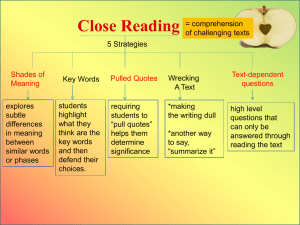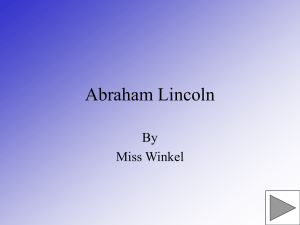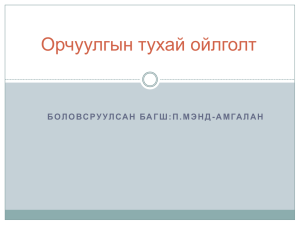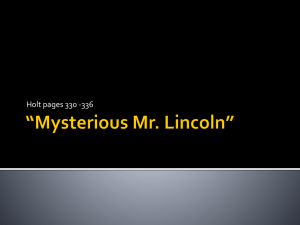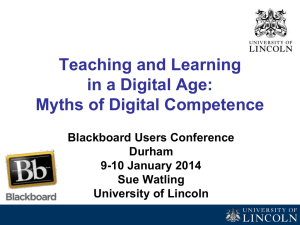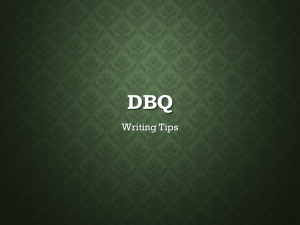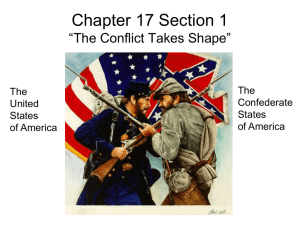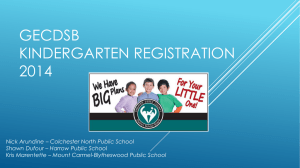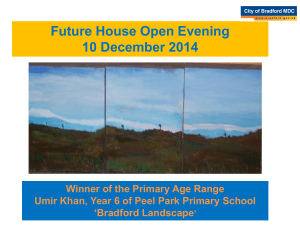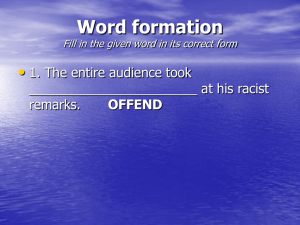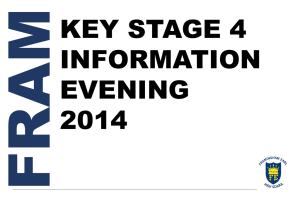close reading
advertisement
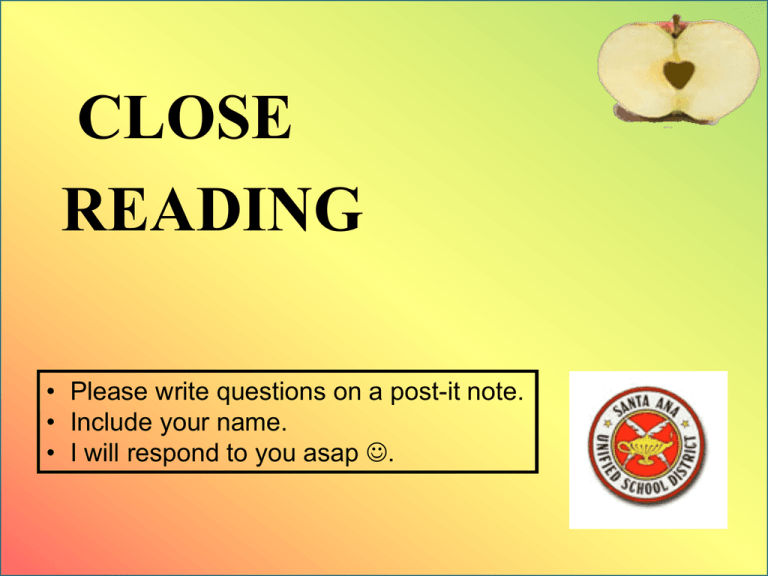
CLOSE READING • Please write questions on a post-it note. • Include your name. • I will respond to you asap . 1. Close Reading = comprehension of challenging texts 5 Strategies (but there are more!) Shades of Meaning explores subtle differences in meaning between similar words or phases Key Words students highlight what they think are the key words and then defend their choices. Pulled Quotes Wrecking A Text Text-dependent questions requiring students to “pull quotes” helps them determine significance *making the writing dull high level questions that can only be answered through reading the text *another way to say, “summarize it” Example of “Shades of Meaning” in a Close Read 1. At your table, open your envelope. 2. Put the 8 words in order from: MOST DESTRUCTIVE to LEAST DESTRUCTIVE 3. Be ready to explain your choices. Mt. Saint Helen’s Video Clip Now, “Pull a Quote” from one of the two paragraphs we just read. What sentence captures the main message of the paragraph? Text Dependent Questions: 1. Are forest fires ever good? Using evidence from the text, explain your answer. 2. If you were talking to your 6 year old cousin, how would you explain ecological succession? 3. Create a thinking map that compares and contrasts primary and secondary succession. WRECKING A TEXT •Highlighting the choices the author makes in the text. •Then Mr. Fox chose three of the plumpest hens and with a clever flick of his jaws he killed them instantly. (RoaldDahl) •How could you rewrite this sentence? How does your word choice change the meaning? Why do you think Dahl made the word choices he did? Strategies for Close Reading KEY WORDS • Allows readers to locate the center of a piece of writing • Students can highlight key words. • Read Let Evening Come *Identify one or more words you consider to be central to the meaning of the poem. *Be prepared to explain your choices. *Why do you think the author chose this word instead of another? *How does this word capture the centrality of the text? Strategies for Close Reading Key Words Allows readers to locate the center of a piece of writing Students can highlight key words. Read Let Evening Come 1) Identify one or more words you consider to be central to the meaning of the poem. 2) Be prepared to explain your choices. 3) Why do you think the author chose this word instead of another? 4) How does this word capture the centrality of the text? Let Evening Come Let the light of late afternoon shine through chinks in the barn, moving up the bales as the sun moves down. Let the cricket take up chafing as a woman takes up her needles and her yarn. Let evening come. Let the fox go back to its sandy den. Let the wind die down. Let the shed go black inside. Let evening come. To the bottle in the ditch, to the scoop in the oats, to air in the lung let evening come. Let it come, as it will, and don't be afraid. God does not leave us comfortless, so let evening come. Jane Kenyon PULLED QUOTES • Magazines often pull and box important quotations from articles to attract reader attention. • Requiring students to pull quotes helps them determine significance. *Work with your table to identify a significant quotation. Write a short justification for the quotation you selected. Why is it significant? Strategies for Close Reading Text Independent Text Dependent The overarching problem with these questions is that they require no What is the little red hen planning? Why did the North fight the civil familiarity at all with Lincoln’s speech in war? Have you ever been to a funeral or order to answer them. Responding to these sorts of questions instead gravesite? requires students to go outside the text. Lincoln says that the nation is dedicated to the proposition that Such questions can be tempting to ask “all men are created equal.” Why is because they are likely to get students equality an important value to talking, but they take students away promote? from considering the actual point What just happened? Lincoln is making. They seek to elicit a personal or general response that relies How does the hen feel about others’ on individual experience and opinion, response to her request for help? and answering them willso? not move What makes you think students closer to understanding the How does the author help us text of the “Gettysburg understand what a mill Address.” is? Text Independent Good text dependent questions will often Havelinger you everover eaten freshly baked specific bread? phrases and sentences How do you feel when you ask for to ensure careful others for help and they don’t help? comprehension of the help What istext—they your favorite animal? students see something Who in your life works really hard? worthwhile that they How might you help him or her? would not have seen on a moreour cursory Remember trip to thereading. high school Have you ever seen a hen? farm? What animals did we see? Text Dependent In the first sentence, what does Lincoln tell us about this new nation? What is he saying that is significant about America? Is he saying that no one has been free or equal before? So what is new? (Beyond what students may or may not know about the Declaration of Independence) what does Lincoln tell us in this first sentence about what happened 87 years ago? Who are “our fathers”? What can we know about “our fathers” from this sentence? What impact does starting the sentence with “now” have on its meaning? When Lincoln says the nation was “so conceived and so dedicated” what is he referring to? SHADES OF MEANING Explore small, subtle differences in meaning between similar words or phrases •Read a list of words carefully •Put them in order according to their meaning •Ask yourself -Which word has the strongest meaning? Which word has the weakest meaning? •Write the weakest word first Strategies for Close Reading Close Reading Tips • Use a short passage. • Read with a pencil. • Note what is confusing. • Pay attention to patterns. • Give students a chance to struggle a bit. Close Reading Task • Choose a section of text you will be covering in the next 3 weeks. • Choose 1 or 2 of the close reading strategies to use with the text. • Design the lesson. • Do the lesson by week of October 25, and be ready to share what worked and what might need to be adjusted. Big Idea Big Idea • The words know and understand are not synonyms. • A student can have an accurate and thorough knowledge of something without understanding why the knowledge is justified, what the knowledge means, or what can be done with that knowledge • Wiggins and McTighe, 1999,UbD Handbook Common Core Unit Big Idea Guidelines Some Examples Subject Big Idea English / Foreign Language • Everyone has a story to share/tell. • Relationships are never black and white. Social Studies • What people have done in the past is the foundation of what we do today. • Power can have positive and negative effects. Science • Different processes affect the world. • Life exists in a delicate balance. • Principles of chemistry underlie the functioning of all living things. Math • Relationships come in many forms. • Rules are essential in a structured system. Physical Education • Structure is dependent on rules. • What goes up, must come down. VAPA • Power is the ability to influence others 3. Essential Questions Common Core Unit Essential Questions • Essential questions are – concepts in the form of questions. – organizers that set the focus for the lesson or unit. – initiators of creative and critical thinking. – not clear-cut. – interesting to students - sparking their curiosity and sense of wonder. – engage students in real life problemsolving. Essential Question Examples Subject Big Idea Essential Questions English/ Everyone has a story to share/tell. i. How does conflict impact relationships? ii. How do an author’s experiences affect plot? iii. How does structure impact “everyone’s” story? iv. How does perspective affect meaning? Social Studies What people have done in the past is the foundation of what we do today. i. What types of issues cause great empires (nations, governments…) to fall? ii. How did external forces contribute to early revolutions? iii. Why have some revolutions resulted in lasting democracies and others not? Science Different processes affect the world. i. How do organisms affect the Earth’s surface? ii. How is topography affected by weathering? iii. Why are there different types of soils? Foreign Language Subject Big Idea Essential Questions Math Relationships come in many forms. i. What is the relationship between plotted points and the slope of a line? ii. How are x and y related? iii. How do functions show a relation between two quantities? Physical Education Structure is dependent on rules. i. What social skills are needed to work cooperatively? ii. Why are rules needed to play an organized sport? iii. What motor skills are needed to play basketball successfully and why are these important? Visual And Performing Arts Power is the ability to influence others. i. ii. How is music used to convey power? How is music used to influence emotional responses? Essential Questions Checklist • • • • • • • • • EQ’s Usage Tips Organize units around EQ’s Design assessment tasks that link the unit’s EQ’s 2-5 EQ’s per unit Frame questions in “kid language”, but provocative and engaging for the age group Link lesson activities to the EQ’s. Logically sequence the questions to assure a natural flow of thought Post the EQ’s clearly in class Help students make personal connections to the EQ’s via personal stories and outside evidence like news clippings. Unpack the questions using sub-questions and Thinking Maps EQ Litmus Test “An essential question is – well, essential: important, vital, at the heart of the matter – the essence of the issue.” - Grant Wiggins A question is essential when it: • Causes genuine INQUIRY into the big ideas and core content • ARGUABLE: provokes deep thought, lively discussion, sustained inquiry, and new understanding as well as more questions • Requires students to CONSIDER alternatives and viewpoints, WEIGH evidence, SUPPORT their ideas, and JUSTIFY their answers • Stimulates vital, on-going RE-THINKING of big ideas and assumptions • Sparks meaningful CONNECTIONS with prior learning and personal experiences. Two Types of EQ’s Overarching Topical • Points beyond a unit to larger, transferable ideas • Specific topics, events or texts are not mentioned • (ex: Is it inevitable that history repeats itself?) • Links one topic to other related topics and subjects • (ex: Can the health care policy of the present Administration be financially solvent in 50 years?) Linking math and social studies • Can be answered through the course of learning about the unit content and stay within the bounds of that subject • No single correct answer; answers can be defended from content facts • (ex: How many ways can we achieve the sum of 23?) What’s the Connection to Big Ideas and Essential Questions? • Big ideas and essential questions: – assist students in gaining deeper understanding of content and skills. –assist teachers in focusing their teaching at helping the students gain deeper understanding. Big Idea/Essential Question Task Using your content standards: • Partner with someone within your content. • Choose a specific content standard. • Generate a “big idea” • Create 3-5 “essential questions” • Write your big idea and essential questions on a piece of paper, indicating your subject and names. • Leave your paper with me. I will type it up and distribute it to all Godinez staff.
